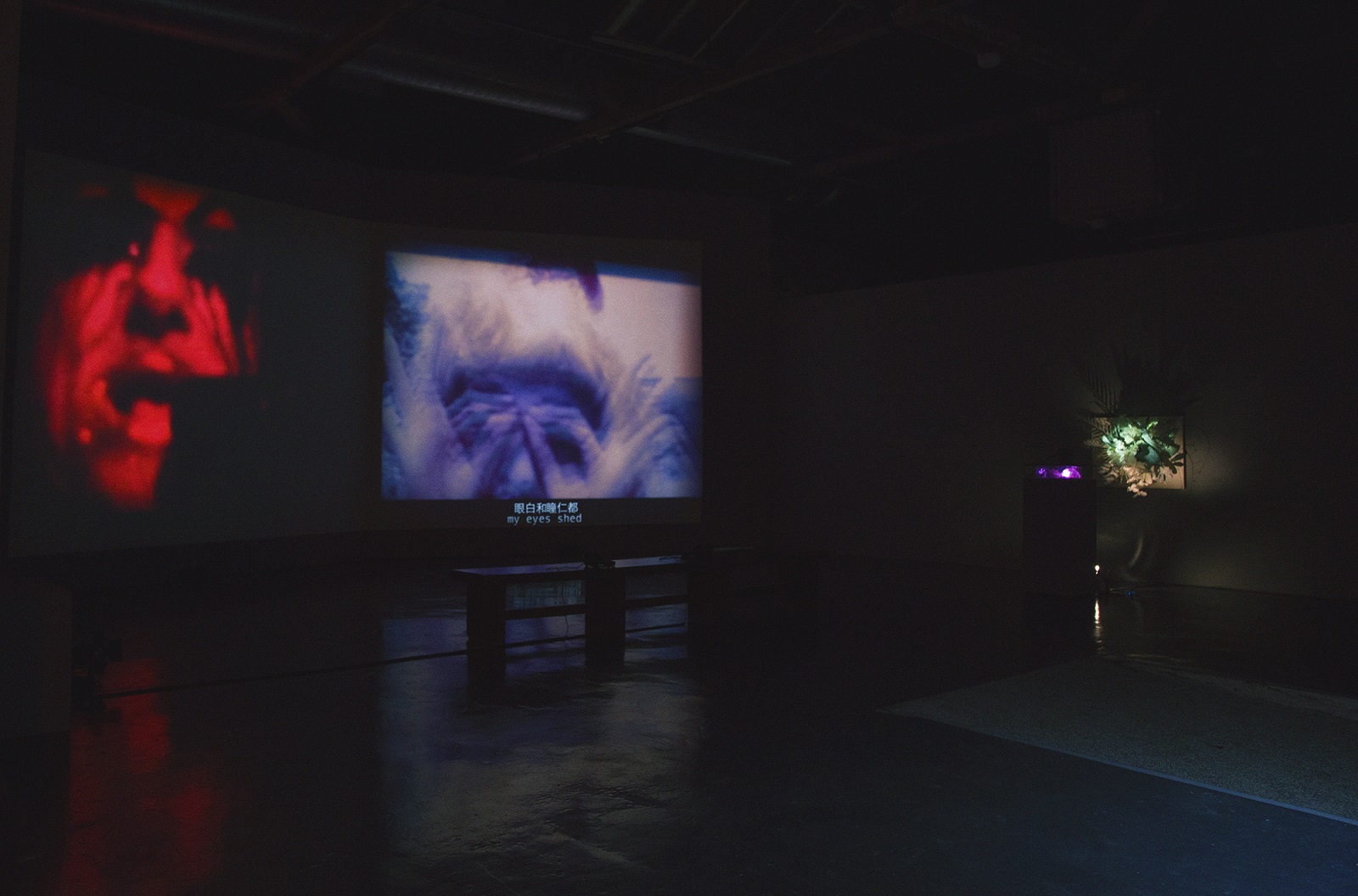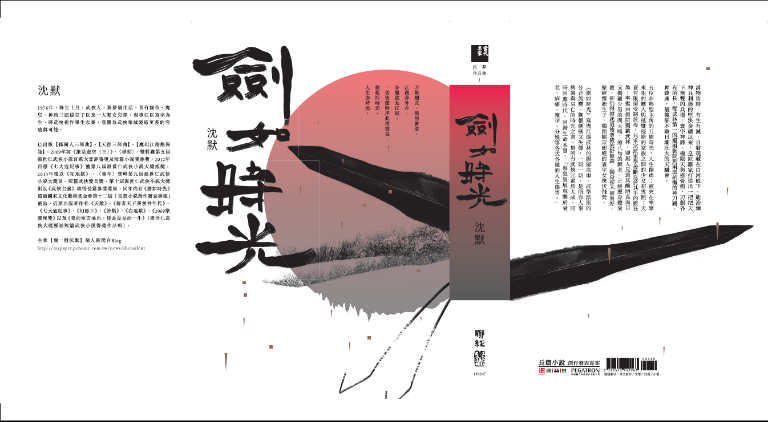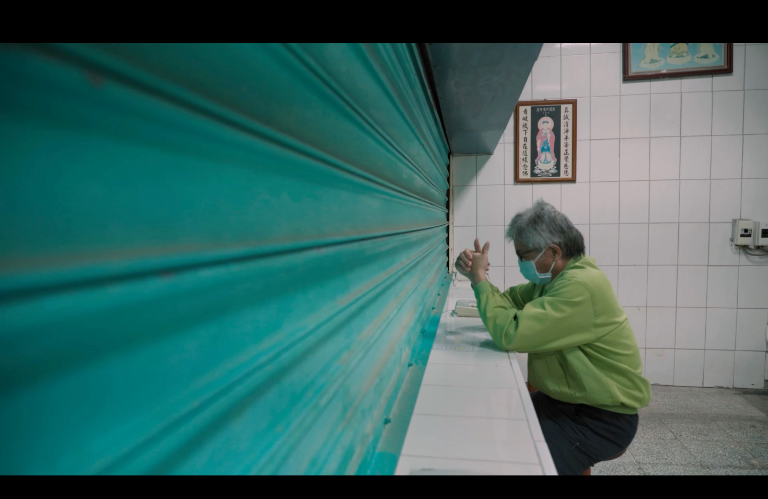One of the core issues of cinematic modernity evolves around the circulation, absorption, and transformation of thoughts on transnational and cross-cultural images. The French New Wave gained prominence after World War II when a group of rebellious critics built a pantheon of films with works by other European directors and classical Hollywood cinema, and all the while, they were dreaming about their own future creations. Familiar examples of such influence are seen in the directorial debuts of François Truffaut and Jean-Luc Godard, with a young boy who steals a movie publicity photo of Summer with Monika and a thug who strokes his lips in imitation of the actor, Humphrey Bogart.
Shifting the scene to Taiwan in that bygone era, the magazine Theater (劇場) launched in the 1960s began to interpret this cinematic modernity with multilingual translations of scripts, reviews, and images; it gave birth to Taiwan’s cinephilic culture, in a time when most films could only be coveted and fancied but rarely ever actually screened. In the 1970s, the first generation of the magazine, Influence (影響, the magazine’s English title was changed to Imagekeeper Monthly when it was re-launched in 1989), introduced new knowledge on foreign films, and also through seeing and critiquing domestic films, writing then became a critical part of the local cinephilic culture. Fast forward to the 1980s, the cinephilic culture grew more distinct with the mounting popularization and institutionalization of electronic video recording equipment. However, it should be noted that such “popularization” and “institutionalization” were quite paradoxical; years later, many people still recall and remain amazed by the time when movie fans were scrambling to snatch tickets for the Golden Horse Film Festival, but “copies” of art films from Europe, the United States, and Japan were also available for screening at public institutions and private establishments (which included the Film Library and private screening spaces, such as the Solar System MTV (太陽系), Ying Lu (影廬), Classic Art Studio (經典藝術工作室), and others). It was apparent that film enthusiasts, including the general audience, film critics, and experts, had acquired a new way to experience movies, which allowed them to re-watch and freely rewind and pause motion pictures. The act of movie-watching had evolved from a communal act to a private ritual, and more importantly, the film piracy culture, which made it possible to watch movies “in secret”, had also led to an alternative cinephilic modernity.

One of the exhibition galleries is transformed by the curator into an MTV viewing booth, which was quite popular back in the day, and Alphonse Perroquet/Parrot Caille/Quail Java Sparrow Youth-Leigh, Chen Chang-Fei, and Wang Ming-Huang are seen sharing their experiences on the television screens scattered on the floor, the table, and the display shelf. (Photo by Wang Jun)
Encountering the Pirated Videotape Culture
Close ties are observed between the abovementioned and the exhibition, Every Film is an Enigma: Moving Images in the Black Box and the White Cube, curated by The Other Cinema Collective (comprised of Chou Yu-Ling, Wen Hsu, Wu Tzu-An, and Sung Wei-Hsuan). In order to present this particular chapter of history, an exhibition space in the Soulangh Cultural Park is transformed by the curator into a nostalgically sentimental private viewing booth that was quite popular in Taiwan back in the day. (This once popular “non-place” referred to in Taiwan as “MTV”, which stands for “movie TV”, were facilities where people could rent out private rooms to watch videotaped movies.) Inside the dimly lit exhibition space and seen talking about their experiences on the television screens scattered on the floor, the table, and the display shelf are the following three witnesses who were profoundly influenced by the culture of video piracy at the time, and they are Alphonse Perroquet/Parrot Caille/Quail Java Sparrow Youth-Leigh (who went by his birthname, Li You-Hsin, prior to 2006), Chen Chang-Fei (owner of Hi Videos (秋海棠)), and Wang Ming-Huang (director of 8 & ½ Classic Theater (8又1/2非觀點劇場)). Experiences of their encounters with the videotape piracy culture are recounted by these three figures who hold irreplaceable positions in Taiwan’s alternative history of cinephilia. At the time, Lee had taken over a column about video news in Commercial Times Supplement (工商副刊) from Lee Yung-Chuan who had gone abroad to pursue further studies; Chen Chang-Fei, who was previously working for a political opposition (黨外, tangwai) magazine, had started to sell pirated videotapes for the business opportunities involved; and the original intention of Wang Ming-Huang when he founded the 8 & ½ Classic Theater in Taichung was to expand Cheng Guo-Wei’s videotape and art film club business (Classic Art Studio) outside of Taipei. In addition to audio-visual recordings gathered from fieldwork, also on display in the booth are artifacts collected by the three interviewees, including movie screening schedules of viewing establishments Movie House (電影屋) and Ying Lu; individual videotapes of films by different directors that were duplicated in various speeds (courtesy of Alphonse Perroquet/Parrot Caille/Quail Java Sparrow Youth-Leigh); classic films released by Vision 3 Films (courtesy of Hi Videos); publications released for the film festival organized by the 8 & ½ Classic Theater; Influence/ Imagekeeper Monthly from the 1980s to the 1990s; clippings of the Commercial Times Supplement column, and Classics Report.
The artifacts on display in the exhibition’s MTV viewing booth include movie screening schedules of Movie House and Ying Lu; classic films released by Vision 3 Films; publications released for the film festival organized by the 8 & ½ Classic Theater; Influence/Imagekeeper Monthly from the 1980s to the 1990s; clippings of the Commercial Times Supplement column, and Classics Report.
It was apparent that the modernity demonstrated by the Taiwanese cinephiles in the 1980s was quite different from the previous two decades, and it was mainly due to how motion pictures were able to be duplicated, circulated, and distributed, which provided the audience with a unique subjectivity. To a certain degree, through pirated videos, they were able to see films from Europe, the U.S., or Japan that were previously unavailable to them, and the films had already by then reached classic status, and due to the then booming video piracy business, those film buffs were able to catch up and then proceed to enjoy art movies at the same time as other audiences in Europe, the U.S., or Japan. To speak in hyperbole, if the cinephilic culture in the 1960s-1970s represented an irrefutable “translational modernity”, prior to the enactment of Section 301 of the U.S. Trade Ac, the 1980s and the 1990s can then be considered a period when the modernity was oriented around duplication, or piracy. Due to Taiwan’s unique international status (it was not subject to foreign copyright regulations) and along with its booming economy (“Taiwanese people are up to their ankles in money” was a popular saying at the time), cinephiles were able to enjoy pirated domestic and international films for a minimal fee. Besides the general audience, Chinese-speaking directors also benefited from the trend. Aside from what is stated in the curatorial statement about watching videotapes was how director Edward Yang was able to see the iconic works of international grandmasters of filmmaking, two other renowned professional cinephiles/directors have also conveyed similar experiences in their movies. In Tsai Ming-Liang’s What Time Is It There? (2001), Lee Kang-Sheng and Alphonse Perroquet/Parrot Caille/Quail Java Sparrow Youth-Leigh are seen flipping through videotapes at a Hi Videos stall on Chongqing South Road in Taipei, with a connection formed between the cinema culture of the Chinese-speaking world and France. Similar examples have been noted in China from the 1990s to the present; for example, in Unknown Pleasures, a 2002 Chinese film directed by Jia Zhangke, Xiao Wu is seen asking a guy selling pirated videos on the street for the movies, Xiao Wu and Platform. As for piracy’s contribution toward modernity, in a time when martial law was enforced, it opened up a portal to let in alternative images and ideas that were forbidden to be imported by the authoritative regime because they were deemed unorthodox, rebellious, and unconventional.
Two-channel Projection: ‘Yi-Ren (The Person of Whom I Think)’
In a time when the modernity of piracy has been forgotten and replaced by globally ubiquitous uploads/downloads, this exhibition critically sheds light on its notable extensity. In my opinion, beyond simply just a representation of historical scenes that allows for re-experience, reconstruction, or even commemoration, embodied by this one-of-a-kind, dim and private viewing space is the potential to transform and carry multiple heterogeneous images.
On view next to the recreated viewing booth in the exhibition is the two-channel projection, Yi-Ren (The Person of Whom I Think), created by Wu Tzu-An in 2015. Seeing from the artwork’s material components and composition, it is a mixed media piece comprised of diaries, poetry, objects, and installation, and it converts between analog and digital images. Subject-wise, it is an artwork of moving images that revisits Chiu Kang-Chien’s films and poems. On the one hand, the showing of Yi-Ren (The Person of Whom I Think) in this exhibition makes a statement about the transition from the small screen to the big silver screen, which has to do with the arrangement of machines and also the mode of viewing. On the other hand, it also pushes the cinephilic culture, known for its modernity of piracy, toward a modernity that explores the cinema revisited. The former is a notable feature of the viewing booths popular in the 1990s, and it also serves as a core representation that shows the video sculpture’s transition into a large-scale video projection. Moreover, the latter is especially critical because Chiu Kang-Chien, who founded the magazine, Theater, along with Chuang Ling and others, happened to be a pioneer of the cinephilic culture’s translational modernity, and by referencing the works of this forerunner, Yi-Ren (The Person of Whom I Think) then embodies the necessity of images with phantom effect. In other words, the two-channel projection, Yi-Ren (The Person of Whom I Think), shown in an exhibition space that includes a MTV viewing booth, allows the images’ transtextuality, permutability, and creatability to extend and spread: Transcending beyond the exhibition’s recreated viewing booth and beyond a work that pays tribute to the late poet, from the on-site setting to the two-channel projection, a critical turning point is marked for the production of video art.

Wu Tzu-An, Yi-Ren (The Person of Whom I Think), super 8 transfer to digital, 13 min. 45 sec., 2015. (Photo by Wang Jun)
Cinema and also Non-cinema
Based on the aforementioned, my focus is not targeted on the image flow displaced between movie theaters and art museums/galleries that’s mentioned in the exhibition’s subheading, Moving Images in the Black Box and the White Cube. Precisely speaking, if the practice and concept of the migration of images, which have gained popularity in the West over the past decade, can take on a new context in Taiwan, its focus may not be on the “translation” of the related subjects or the “copying” of curatorial methodology; instead, it has to do with the new horizons opened up by the curator through focusing on the inter-imageity of the two different loci and the identities of the artists. This is the reason why compared to Farewell Photography (2016) by Wang Chin-Hong and Luke Fowler’s The Poor Stockinger, the Luddite Cropper and the Deluded Followers of Joanna Southcott (2012), the exhibition’s opening performance, Mysterious! Fireworks Liquefaction Magic, a “live cinema” work by Wu Tzu-An and Liu Fang-Yi projected on a white screen with red edge trim, seems to have piqued the audience’s curiosity even more.
According to the explanation given by the performance’s veteran projectionist: This is a piece of cloth used for showing films dedicated to the gods, and the red trim around the edges holds religious ritualistic implications and suggests prayers for blessings. Therefore, when the moving images and the simulated sounds are activated in the showroom, it becomes inevitable for the improvised performance of Mysterious! Fireworks Liquefaction Magic to project a peculiar quality that is comprised of a mixture of unexpectedness, mystique, flashing lights, and floating ephemerality. Consequentially, concepts from experimental cinema to expanded cinema may likely quietly escape, spread, and go through qualitative changes through the curatorial concept and the Western theoretical context that The Other Cinema Collective has appropriated. In other words, it is both a cinema and a non-cinema; it is an alternative cinema but can also not hold any affiliations with the cinema. At this point, I have started to understand why the curator has also included in the project the screening of Mosquito Cinema: Journey to the West at the Tsung-Yeh Arts and Cultural Center in Tainan. This particular film screening format holds historical connections that are associated with commercial interests, political mobilization, and also folk rituals.
If this approach of considering the contemporary cinema of exhibition as a curatorial modality is able to prompt young visual artists to creatively consider and explore the spectrum of Taiwanese images arts, besides presenting a dialogue between European, American, and local moving images, the potential of Every Film is an Enigma: Moving Images in the Black Box and the White Cube —whether theoretical or practical—lies in its effort to discover new possibilities for self-oriented fieldwork, history, and methodology. Similar to the work by artist Chen Chieh-Jen which examines the Taiwanese political art paradigm by exploring the historical context of the yaoyan films (謠言電影, literally rumor cinema), which were films that were interpreted by Benshi (辯士, silent-film narrators) on the Bitai Thoan (美台團, a traveling film-screening crew launched by the Taiwanese Cultural Association in Taiwan in 1926 and 1927). Beyond the black box and the white cube, the “mosquito cinema”, or outdoor film screening, provides The Other Cinema Collective with an equally important conceptual inspiration—and it is undoubtedly this exhibition’s most fascinating enigma that awaits to be solved.

Opening performance: Mysterious! Fireworks Liquefaction Magic by Wu Tzu-An and Liu Fang-Yi. (Photo by Wang Jun)
*Aranslator: Hui-Fen Anna Liao
More CASE STUDY
_1685344611325.png)

